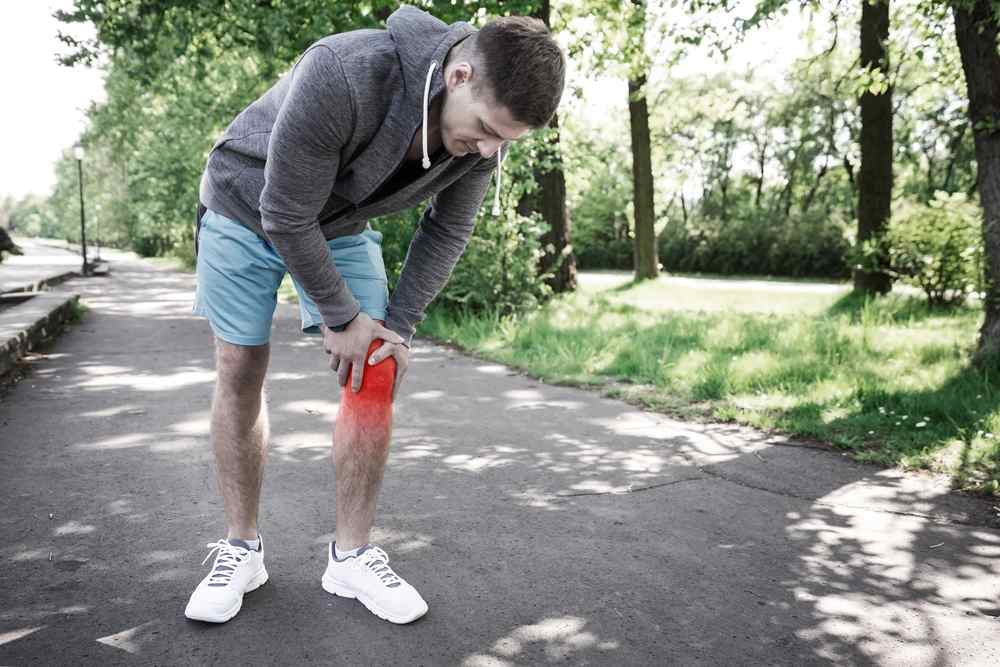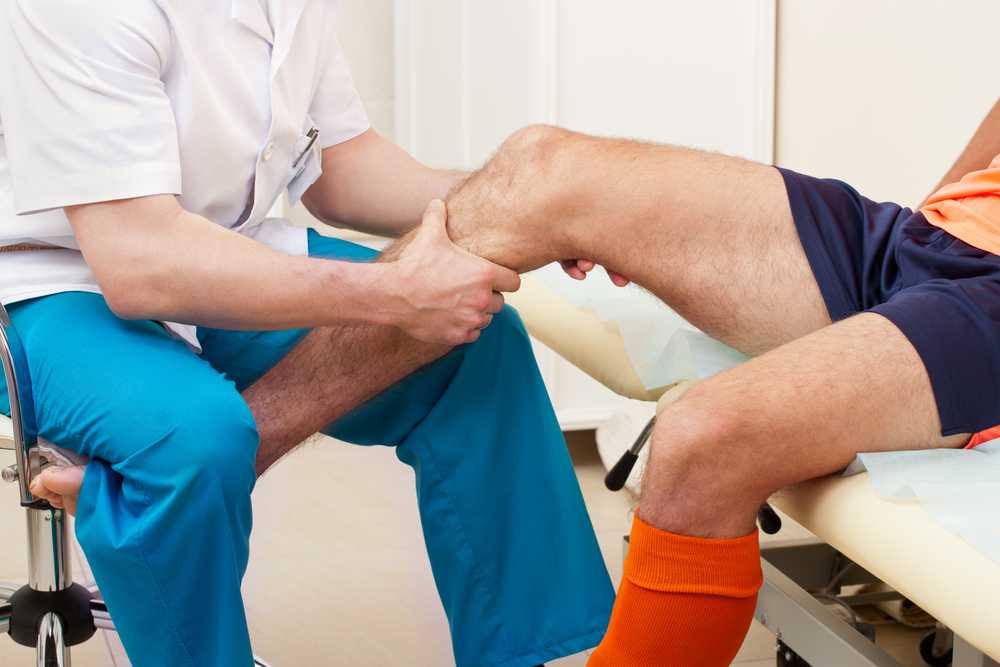 Knee pain can happen to anyone, from professional athletes to folks who work at a desk all day. There could be several reasons why your knee hurts when you go from a bent to a straight position, especially if you lead a sedentary lifestyle. If you’re wondering, “Why does my knee hurt when I straighten it?” you’ve come to the right place! Let’s explore possible explanations, get a better understanding of how the knee joint actually works, and what diagnostic and treatment options are available for you.
Knee pain can happen to anyone, from professional athletes to folks who work at a desk all day. There could be several reasons why your knee hurts when you go from a bent to a straight position, especially if you lead a sedentary lifestyle. If you’re wondering, “Why does my knee hurt when I straighten it?” you’ve come to the right place! Let’s explore possible explanations, get a better understanding of how the knee joint actually works, and what diagnostic and treatment options are available for you.
Why Does It Hurt When I Straighten My Knee?
Here are a few possible explanations:
- Muscle Weakness: Long periods of inactivity can lead to your muscles becoming weaker, including the muscles surrounding the knee joint. If your muscles are weak, they may not provide the necessary support to the knee joint, leading to pain when straightening the knee.
- Tight Muscles or Tendons: Inactivity can also cause muscles and tendons to become tight or shortened, including the quadriceps along the front of your thigh. This tightness can cause pain or discomfort when straightening the knee.
- Joint Stiffness: Lack of movement can lead to stiff joints, especially in the knee joint. When you try to straighten your knee after it has been bent for a while, you may notice pain or discomfort due to stiffness in the joint.
- Degenerative Joint Conditions: Over time, a sedentary lifestyle can contribute to the development of degenerative joint conditions like arthritis. These conditions can cause pain and stiffness in the knee joint, particularly during movement.
- Poor Posture: Sitting for long periods with poor posture can put extra strain on the knees, leading to discomfort when straightening the knee.
Understanding the Knee Joint
The knee joint is a complex structure that plays a crucial role in supporting your body’s weight and everyday movements. The knee joint is known as a hinge joint, which means it allows you to bend (flexion) and straighten (extension) the leg. We depend on our knees for so many movements and activities throughout the day, including standing, walking, running, jumping, and squatting, so wondering “Why does my knee hurt when I straighten it?” is a common and legitimate concern.
Anatomy of the Knee
The knee is a complex structure, and its range of motion makes the joint susceptible to injury and wear and tear over time, especially if you participate in high-impact or repetitive activities. Understanding the anatomy and function of the knee joint can help you better understand the potential causes of knee pain during even the most regular of movements, like straightening your leg.
- Femur and Tibia: The femur, the longest bone in the body, meets the tibia at the knee joint, which forms the hinge joint that allows for bending and straightening of the leg.
- Patella: The patella is a small, flat, triangular bone located in front of the knee joint, commonly known as the kneecap. It acts as a protective shield for the knee joint and also supports quadriceps muscles during movements like straightening the leg.
- Ligaments: Several ligaments stabilize the knee joint and help prevent excessive movement. These include the anterior cruciate ligament (ACL), posterior cruciate ligament (PCL), medial collateral ligament (MCL), and lateral collateral ligament (LCL).
- Cartilage: The knee joint contains two types of cartilage that cover the ends of the femur, tibia, and patella to reduce friction and absorb shock, and act as a cushion between bones.
- Muscles and Tendons: The muscles surrounding the knee joint play an important role in your movement and stability. Key muscles include the quadriceps along the front of the thigh, the hamstrings at the back of the thigh, the calf muscles, and the muscles of the hip and pelvis.
Diagnosing the Source of Knee Pain
Diagnosing the root cause of your knee pain when straightening the leg is essential for getting the best treatment and experiencing long-lasting relief. When you visit your Marietta chiropractor for knee pain, they will provide you with a comprehensive evaluation to diagnose the specific issue and develop a personalized treatment plan just for you.
Here’s what to expect when you visit your Marietta knee specialist at AICA Orthopedics.
Medical History and Physical Examination
When you visit AICA and ask, “Why does my knee hurt when I straighten it?” your doctor will go through your your medical history, including any previous injuries, chronic conditions, or activities that may contribute to your knee pain. Your doctor will perform a physical examination of the knee joint, which can include range of motion and stability tests to help identify any signs of inflammation, instability, or structural abnormalities.
Imaging Tests
In some cases, imaging tests such as X-rays or an MRI may be ordered to evaluate the internal structures of the knee joint, including bones, cartilage, ligaments, and tendons. These tests can help confirm or rule out knee conditions or injuries like fractures, arthritis, ligament tears, or tendonitis.
Treatment Options for Knee Pain
 Once your doctor identifies why your knee hurts when you straighten it, they can provide you with the best options for treating your knee pain. Here are some examples of treatment options for knee pain, including at-home care, non-invasive procedures, and when surgery may be necessary.
Once your doctor identifies why your knee hurts when you straighten it, they can provide you with the best options for treating your knee pain. Here are some examples of treatment options for knee pain, including at-home care, non-invasive procedures, and when surgery may be necessary.
- Rest: Temporary rest from activities that exacerbate knee pain, along with limiting activities to reduce stress on the knee joint, can help alleviate symptoms and promote healing.
- Physical Therapy: A physical therapy program focusing on strengthening exercises, flexibility training, and manual therapy techniques can help improve muscle strength, joint stability, and range of motion.
- Bracing or Orthotics: Wearing a knee brace or using orthotic devices like shoe inserts may also provide support, improve alignment, and reduce your discomfort during activities.
- Medication: Your doctor may recommend over-the-counter medications or prescriptions to relieve pain and reduce inflammation, alongside other treatment techniques.
- Steroid Injections: Injections of corticosteroids directly into the knee joint can also provide temporary relief from pain and inflammation, especially if you are experiencing acute pain.
- Arthroscopic Surgery: In cases where conservative treatments are ineffective, arthroscopic surgery may be recommended to address underlying issues, which can include meniscal tears, ligament injuries, or loose bodies within the knee joint.
- Joint Replacement: For people with severe arthritis or irreparable damage to the knee joint, a partial or total knee replacement surgery may be recommended to relieve your pain and improve function.
AICA Orthopedics for Knee Pain
At AICA Orthopedics in Marietta, we offer comprehensive treatment and care for a wide range of conditions, including various types of knee pain. Our healthcare specialists include chiropractors, physical therapists, and orthopedic surgeons who work together to provide you with a personalized treatment plan. Our Marietta chiropractors offer non-invasive and all-natural approaches to relieving your knee pain so you can get back to your regular activities as soon as possible. From diagnosis and treatment through recovery, our team of doctors is here to support you and help you experience long-lasting pain relief.